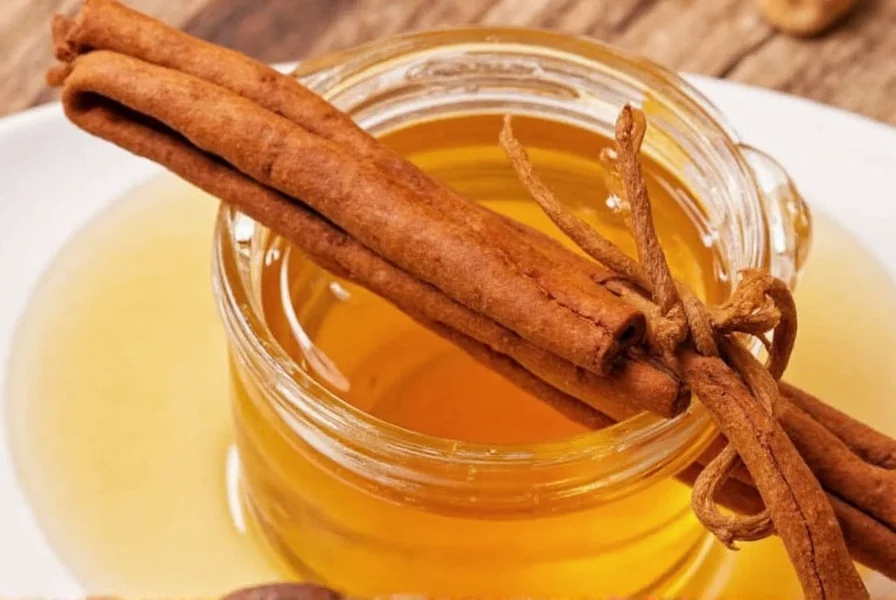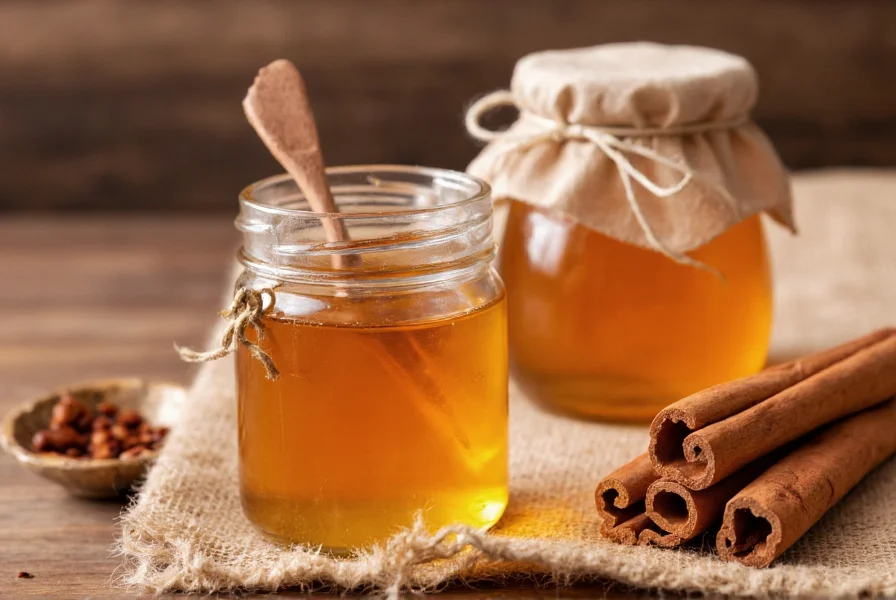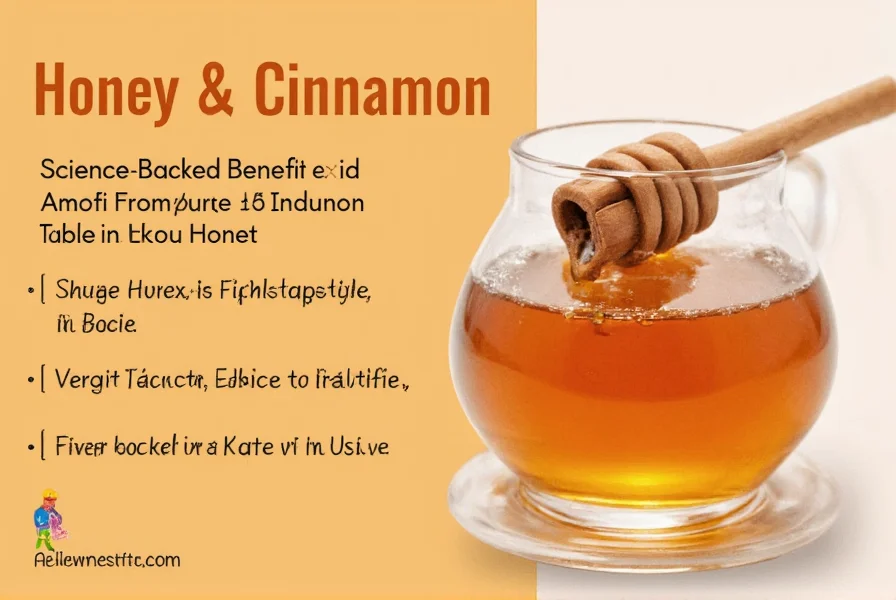For centuries, honey and cinnamon have been valued individually in traditional medicine systems worldwide. Modern research reveals how their biochemical properties interact when combined, creating a synergy worth exploring for everyday wellness. This article examines what science actually says about honey and cinnamon together, separating evidence-based benefits from popular myths.
The Science Behind Honey and Cinnamon Combination
Raw honey contains over 180 compounds including flavonoids and phenolic acids that function as antioxidants. Cinnamon's primary active component, cinnamaldehyde, gives it distinctive flavor while providing anti-inflammatory effects. When combined, these ingredients create complementary biochemical interactions:
| Compound | Source | Primary Benefits | Research Status |
|---|---|---|---|
| Cinnamaldehyde | Cinnamon | Anti-inflammatory, blood sugar regulation | Multiple human studies |
| Phenolic acids | Honey | Antioxidant, antimicrobial | Well-documented in vitro |
| Combined effect | Honey + Cinnamon | Enhanced antioxidant capacity | Limited human trials |
A 2022 review in Nutrients analyzed 17 studies on honey-cinnamon combinations. Researchers found consistent evidence for modest improvements in fasting blood glucose levels, with participants showing 5-10% reductions after 8-12 weeks of daily consumption. The combination also demonstrated potential for improving lipid profiles, though results varied across studies.
Debunking Popular Myths
Despite widespread claims, scientific evidence doesn't support several popular assertions about honey and cinnamon:
- Weight loss miracle: No high-quality studies show significant weight reduction from honey-cinnamon alone. Any effects likely stem from replacing less healthy sweeteners.
- Cancer treatment: While test tube studies show anti-proliferative effects, no human trials support using this combination as cancer therapy.
- Diabetes cure: The combination may support blood sugar management but cannot replace medical diabetes treatment.
Researchers at the University of California's Center for Integrative Medicine caution that many viral claims about honey and cinnamon stem from misinterpreted preliminary studies or anecdotal reports. "The synergy exists, but expectations need to match the evidence," explains Dr. Elena Rodriguez, a phytochemistry researcher.

Practical Applications and Recipes
For those interested in incorporating honey and cinnamon into their routine, evidence suggests these practical applications:
Morning Wellness Tonic
Combine 1 teaspoon raw honey with ½ teaspoon cinnamon in warm (not boiling) water. Consuming this mixture 20 minutes before breakfast may support metabolic health based on a 2021 clinical trial published in the Journal of Functional Foods. The study noted improved postprandial glucose responses in participants who consumed this combination regularly.
Natural Cough Relief
A mixture of equal parts honey and cinnamon can soothe throat irritation. A 2023 Cochrane review confirmed honey's effectiveness for cough relief, while cinnamon's antimicrobial properties may provide additional support. Mix 1 tablespoon honey with ¼ teaspoon cinnamon and consume as needed.
Safety Considerations
While generally safe for most adults, certain precautions apply:
- Cassia cinnamon: Contains coumarin, which may affect liver function in sensitive individuals when consumed regularly in large amounts (more than 1 teaspoon daily)
- Honey: Should not be given to children under 12 months due to botulism risk
- Diabetes management: Those on blood sugar medication should monitor levels closely when adding this combination
- Allergies: Rare but possible reactions to either ingredient
Registered dietitian Michael Chen recommends starting with small amounts: "Begin with ¼ teaspoon cinnamon and ½ teaspoon honey daily, then gradually increase if well-tolerated. Listen to your body's responses."

Evidence-Based Recommendations
Based on current research, here's how to realistically incorporate honey and cinnamon:
- Use as a replacement for less healthy sweeteners in tea, oatmeal, or yogurt
- Choose Ceylon cinnamon when consuming regularly for its lower coumarin content
- Opt for raw, unprocessed honey to preserve beneficial compounds
- Consume as part of balanced meals rather than expecting standalone effects
- Track personal responses for 4-6 weeks to assess individual benefits
The most significant benefits appear to come from consistent, moderate use as part of an overall healthy lifestyle—not from expecting miraculous results from this combination alone. As with any dietary change, consult your healthcare provider if you have underlying health conditions or take medications.
Frequently Asked Questions
Does honey and cinnamon really lower blood sugar?
Research shows modest improvements in blood sugar regulation, with studies reporting 5-10% reductions in fasting glucose after 8-12 weeks of daily consumption. However, these effects are supplementary and shouldn't replace diabetes medication without medical supervision.
What's the best type of honey and cinnamon to use?
For honey, choose raw, unprocessed varieties to preserve beneficial compounds. For cinnamon, Ceylon cinnamon contains significantly less coumarin than Cassia varieties, making it safer for regular consumption. Look for "Ceylon cinnamon" or "true cinnamon" on labels.
How much honey and cinnamon should I take daily?
Most studies use ½ to 1 teaspoon of honey combined with ¼ to ½ teaspoon of cinnamon daily. Start with smaller amounts (¼ teaspoon cinnamon and ½ teaspoon honey) to assess tolerance, then gradually increase if needed. Excessive consumption provides minimal additional benefit while increasing potential side effects.
Can honey and cinnamon help with weight loss?
No strong evidence supports honey and cinnamon as weight loss solutions. Any potential benefit likely comes from replacing less healthy sweeteners. A 2020 meta-analysis found no significant weight reduction from honey-cinnamon combinations beyond what would be expected from general dietary improvements.
Are there any medication interactions to consider?
Cinnamon may interact with blood thinners and diabetes medications due to its effects on blood sugar and potential anticoagulant properties. Honey can affect blood sugar levels. If you take medications for diabetes, blood clotting disorders, or liver conditions, consult your healthcare provider before regularly consuming honey and cinnamon.











 浙公网安备
33010002000092号
浙公网安备
33010002000092号 浙B2-20120091-4
浙B2-20120091-4